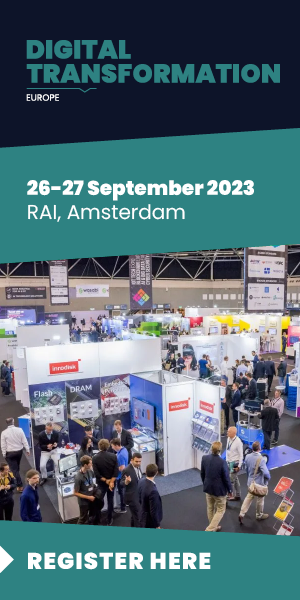
Developer caught up with Barry Goffe, Senior Director of Platform Strategy at OutSystems, who provided valuable insights into the role low-code platforms play in digital transformation.

Digital transformation, as Goffe defines it, is the strategic use of technology to measurably improve business operations. He highlights four key areas where digital transformation brings tangible benefits to organisations:
- Enhancing existing business: Leveraging technology to improve existing business processes, gaining a competitive edge.
- Expanding market opportunities: Utilising technology to introduce new lines of business and seize emerging market opportunities.
- Mitigating risks: Implementing technology solutions that add safeguards to reduce organisational risk.
- Improving efficiency: Harnessing technology to streamline operations and reduce costs, ultimately maximising profits.
Goffe emphasised that the challenge for many organisations lies in the complexity and cost of adopting technology for strategic purposes. Here, low-code development platforms play a pivotal role in democratising technology by simplifying application development, deployment, and management.
“Technology, by its very nature, is often too complex, esoteric, and hard to take advantage of in order to drive digital transformation. For many organisations, making technology a strategic tool remains out of reach. They often muddle along, using technology in tactical ways or doing the bare minimum,” explains Goffe.
Low-code platforms offer a visual approach to development, employing automation and AI to accelerate the entire application lifecycle—from development to monitoring and testing. This approach abstracts much of the complexity, making it accessible to a wider range of companies and reducing the associated risks.
One of the standout advantages of the top low-code platforms is their integration with cloud-native technologies.
Goffe highlighted the significant time and cost savings provided by low-code platforms with cloud-native capabilities compared to traditional methods. While it could take up to 18 months and $2 million to build a cloud-native infrastructure from scratch, low-code platforms offer these capabilities from day one—effectively reducing risk and accelerating digital transformation initiatives.
“And that doesn’t even account for the risk of failing, which is actually relatively high,” adds Goffe.
Measuring the success and impact of digital transformation projects is, of course, a multifaceted task. Goffe noted the importance of assessing traditional development metrics and comparing them with the new approach.
However, Goffe went on to stress that the most impactful measure is through business metrics, such as increased revenue, reduced costs, improved quality, and reduced risk. A successful digital transformation should ultimately translate into a positive impact on the bottom line.
OutSystems’ versatile low-code platform has been used across a wide array of industries and applications, demonstrating its flexibility and power.
“We have customers who have built ERP systems from the ground up. We have a customer in the medical field that connects pacemakers to doctors so that doctors can monitor what’s going on inside someone’s body. We have a whole two countries’ VAT tax systems running on our platform,” says Goffe.
“I saw a really cool app that one of our customers built in the oil and gas industry where they’re using augmented reality. So for field technicians, when they go to an oil rig and they need to fix something, they’re using AR glasses in order to access technical documents and figure out how to go ahead and fix stuff.”
AI is a major topic in the digital transformation landscape. OutSystems has been at the forefront, with a dedicated AI team for the past six years. Goffe highlighted three key areas where AI enhances the low-code platform:
- AI-augmented development: Simplifying and accelerating development processes through AI-driven code completion and natural language queries.
- AI in DevOps and application lifecycle: Implementing AI Mentors to improve code quality, security, performance, and maintainability.
- AI integration: Making it easy for customers to integrate AI services into their applications through connectors to various AI services, including OpenAI.
Ensuring the quality, security, and scalability of low-code applications and integrations is of paramount concern.
Goffe emphasised that OutSystems places equal importance on these aspects as it does on productivity. The platform’s architecture, governance structure, and built-in security checks ensure that applications are not only fast but also scalable, reliable, and secure.
“Your organisation doesn’t have to have an army of white lab-coated rocket scientists in order to ensure that your apps are going to meet all those requirements,” explains Goffe.
“And in the case where you do have really senior technical people, we’re not like taking anything away from those people—we’re just making those people’s jobs way more efficient.”
According to Goffe, OutSystems is committed to empowering organisations to achieve digital transformation with confidence. The platform’s ability to simplify complex technology adoption, coupled with AI-driven capabilities, makes it a crucial player in the digital transformation landscape.
(Photo by Joshua Sortino on Unsplash)

OutSystems is an emerald sponsor of this year’s Digital Transformation Week Europe on 26-27 September 2023. Swing by OutSystems’ booth at stand #286 to hear more about digital transformation from the company’s experts.







